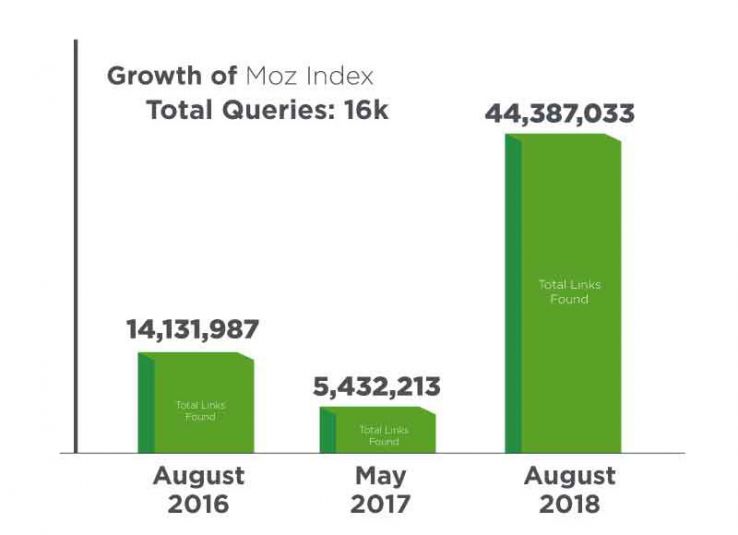Do Links Still Matter? The major study components included: Total number of links to the ranking pages Moz DA of the links to the ranking pages Moz PA of the links to the ranking pages Slicing these calculations into several sub-categories: Informational vs. commercial queries Medical vs. Financial vs. Technology vs. All Other queries We were also able to evaluate just how much the Moz link index had grown for a subset of the queries because we have used the same data on 16K of the 27K queries for three years running (this year's study looked at 9K more queries, but 16K of the queries were in common). But, in the case of links, we also have the fact that Google tells us that links still matter. A score of -1 means the exact opposite: whenever x increases in value, y decreases in value. Google claims to use over 200 ranking factors. High scores are not likely to happen at all and correlation scores of 0.2 or higher already start to suggest (but not prove) the existence of a relationship. Considering the complexity of the Google algorithm's 200+ ranking factors, having one single factor come in at a correlation score that high indicates a strong level of correlation. This is interesting because it does suggest that at some level, the authority of the linking site and the linking page both matter. By the way, in the four years that we've conducted this study, this is the first time that the DA and PA scores have been a stronger indicator of ranking potential than the pure link count. Tell us what you think — do links matter as a ranking factor?
Do Links Still Matter?
For the fourth year running, Stone Temple (now a part of Perficient Digital) conducted a study on how much links matter as a ranking factor. We did that using Moz’s Link Explorer and in this year’s study, we looked at the largest data set yet — 27,000 queries.
Our study used quadratic mean calculations on the Spearman correlations across all 27K tested queries. Not sure what that means? You can learn more about the study methodology here.
The major study components included:
- Total number of links to the ranking pages
- Moz DA of the links to the ranking pages
- Moz PA of the links to the ranking pages
Slicing these calculations into several sub-categories:
- Informational vs. commercial queries
- Medical vs. Financial vs. Technology vs. All Other queries
We were also able to evaluate just how much the Moz link index had grown for a subset of the queries because we have used the same data on 16K of the 27K queries for three years running (this year’s study looked at 9K more queries, but 16K of the queries were in common). In fact, let’s start with that data:

That’s pretty significant growth! Congrats to Moz on that improvement.
Brief commentary on correlations
Correlation studies attempt to measure whether or not two factors are related to one another in any way. We use correlation studies to help us understand whether or not one factor potentially causes the other It’s important to understand that correlation does not prove causation; it simply suggests that it does.
The example I like to share is that there is a strong correlation between the consumption of ice cream and drowning. That does not mean that one causes the other. In fact, the causal factor here is intuitively obvious — hot weather. People eat more ice cream and people do more swimming when it’s hot outside.
But, in the case of links, we also have the fact that Google tells us that links still matter. If that’s not enough…

COMMENTS